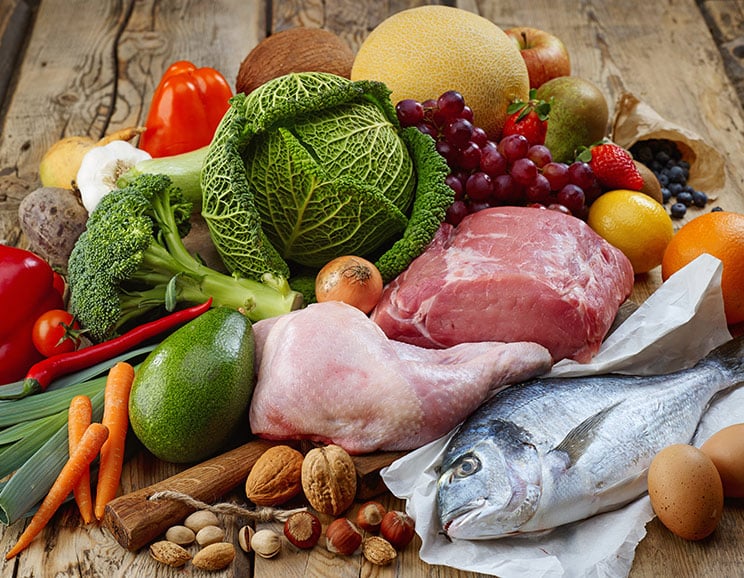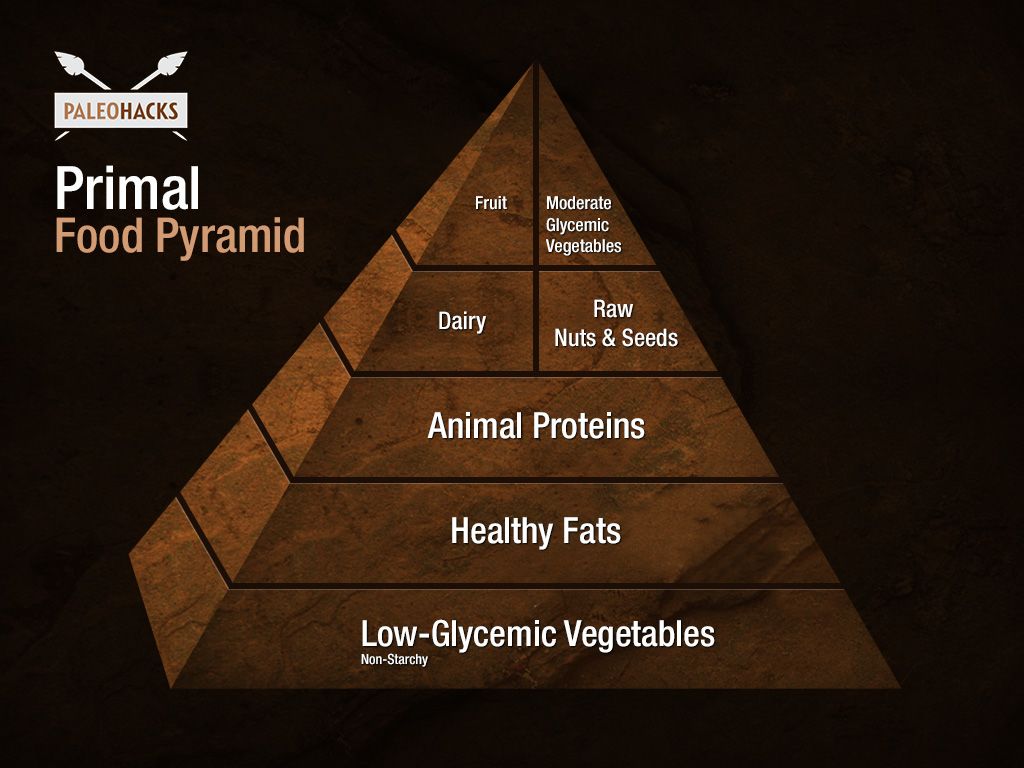Food intolerances are incredibly common. If you have undiagnosed food intolerances and don’t know it, you’re unknowingly inflaming your body with each meal. By using food rotation in your diet, you can discover and then limit or eliminate exposure to the foods that would otherwise weaken your immune system.
A “rotation diet” is a not a diet. It is highly valuable method that can be applied to your Paleo eating plan. Rotation dieting is as simple as getting a lot of variety in your diet by consciously rotating certain foods.
It’s only slightly systematic, and within a few days of practice, can easily become effortless to manage. This simple method can upgrade any Paleo diet and I highly recommend it, especially for anyone who suspects possible gut damage or who is under high stress.
Do you wake up feeling fatigued, depressed, and restless? Break the cycle of bad sleep with our FREE Sleep Guide.
Click here to get your FREE copy of our Sleep Guide!
Why Use Rotation Dieting?
If you’ve been maintaining a strict Paleo diet, but some things still aren’t clicking, then you might have a food intolerance and associated gut imbalance. No worries, there are very simple techniques to rebalance the gut, and food rotation is one of them.
The major advantage of rotating your foods is identifying and correcting food intolerances; you will dramatically improve your immunity and gut function. Food intolerances are a major source of health problems today and many people are unaware of them.
If you do not suspect any issues with your gut, then at the very least, food rotation can still benefit you by improving the variety of food you eat. This makes a diet much more appealing for the long run, keeping flavors and dishes exciting, not restrictive. Plus, you’ll be ensuring that you get a broad spectrum of micro-minerals and other beneficial nutrients.
Examples of Food Intolerances
Most of us are aware of common food intolerances: dairy, eggs, nuts, shellfish, soy, corn, and wheat. Depending on where you live, this might change. Wheat and gluten intolerance is frequent in the West, whereas rice is a much more common food intolerance in the East.
For the most part, the type of food does not change the symptoms of food intolerance, as it is the reaction of the immune system itself that sends the body on the fritz. The symptoms of food intolerance can range anywhere from depression, anxiety, and other mental imbalances, all the way to skin problems, weight gain, and fatigue.
The Causes of Food Intolerances
There are many factors that contribute to food intolerance, including poorly managed mental stress, poor eating practices, poor food quality, metabolic dysfunction, digestive maladies, and adrenal/thyroid deficiency. All of these point to an over-accumulation of stress somewhere in a person’s life.
One of the major accumulated stresses that leads to food intolerance is the issue of overexposure to the proteins found in particular foods.
In simple terms, eating too much of the same food is the primary cause of a food intolerance. In the West, foods like egg, dairy, wheat, corn and soy are common food intolerances because we eat so much of it.
Isolated eating patterns – such as strict dieting – contribute to most food intolerances. When we stop adhering to limited dietary dogmas and welcome a variety of whole foods into our diet, we dramatically decrease the number of food intolerances we have.
By eating less of the same one or two foods, we correct food intolerances, and in the meantime heal the associated problems:
- Digestive Issues
- Allergic Responses
- Weight Problems
- Toxicity
- Skin Irritations
- Exhaustion and Fatigue
- Depression, Anxiety, Brain Fog, and other mental imbalances
- Weakened Immunity
If you have a food intolerance and do not know it, and you are consuming the food to which you are intolerant, you are continually stressing your immune system. The tricky thing is, as people who are so accustomed to feeling high levels of stress, they become immune to it, and the same can happen with food.
Most people do not know they are intolerant to a food because they’re so used to the symptoms of their intolerance that they do not know until their immune system totally shuts down. This isn’t ideal, of course; it is much more ideal to remove it or limit exposure by using rotation in your diet. This way you will start to see more clearly how your body responds to food by contrast.
How Overexposure to Food Makes Us Sick
Using gluten intolerance as an example, it is actually the proteins gluten and gliadin to which people react negatively. The reason so many people in America have gluten intolerance is because it is found in nearly everything we eat. It’s cross-contaminated in many bulk foods such as oats and rice, and it’s an ingredient in nearly every packaged or canned food.
We are being overexposed to it here in America. It’s even in a lot of skincare and hair care products as a filler. Why this is happening is another topic. The point is to show how overexposure and overuse of something creates imbalances in our bodies, society and planet.
Excess exposure to particular foods creates intolerance by imbalance. It creates a stress imbalance within the body. Nearly everything we do is actually a stress because every action carries both the seed of benefit and destruction.
For example, eating benefits us to the point where we overeat. Therefore, it is not stress itself that is the problem; it is an imbalance of a particular stress. In the case of food intolerances, it is an imbalance in nutritional stress.
Once an individual becomes overly stressed, the digestive system becomes weakened. The production of hydrochloric acid begins to shut down and a person stops digesting food properly. When food is not properly digested in the body, the immune system starts to create antibodies to protect the body.
These antibodies bind to the antigen that is created by undigested protein. It does this in an effort to protect the body from what is now recognized by a possible pathogen or some other foreign aggressor in the body. (1)
If this process is drawn out for too long, the body becomes so familiarized with that protein – such as gluten – that it will create antigens on a regular basis. The problem is that to create these antigens takes a lot of energy from the immune system. Over time, you have what is called a weakened immune system or autoimmune disease, which is simply due to the fatigue and exhaustion from the overstimulated immune response — all from eating the same food way too often!
Food Rotation to the Rescue!
If you have a food intolerance and it goes unnoticed, such as gluten intolerance, your immune system is essentially under attack. The body views the food as a toxic invader, which suppresses the immune system over time. Discovering any food intolerances and removing them will dramatically help the immune system to balance.
The optimal solution for any healing is going to be a holistic approach, and the same goes for food intolerances. It’s important to not only reduce the nutritional stress of consuming too much of the same food but to also (of course) reduce all types of stress. I wrote an entire blog about it here.
Using a food rotation diet will help to reduce the physical and nutritional stress load on your immune system. Not only will you put an end to nasty symptoms from food allergies, you will also achieve your ideal weight and gain more energy.
Once you have eliminated intolerant foods you will free up your body from the physical burden of incessantly “fighting” your food. You will then have the energy to actually digest it and create more energy for your health.
The way food rotation works is nomenclature. This is because there are so many foods that are closely related and part of the same species. For example, broccoli, cabbage, canola, and kale all belong to the same family and carry similar proteins.
If you are always eating the same species, you can still easily be overexposed to the same proteins. Therefore, it’s important to understand and classify food groups so you can get more variety. This will minimize the need for mass production of foods and improve diet variety and the health of our bodies and environment astoundingly, but it will require some responsibility on our part.
Here’s a simple protocol we can use to start!
4-Day Rotation Diet
This is a protocol I picked up from Paul Chek’s work. Actually, I sourced his book for a lot of the material in this article and I highly recommend it! I reference it to this day with my clients.
The general recommendation is to adopt a 4-day rotation diet to simplify what otherwise seems an overwhelming process. In our modern world it’s all too easy to eat the same food every day, and finding variety is a bit more challenging. This 4-day protocol really simplifies things.
A full-on rotation diet takes a bit more work, and I recommend personal study on the subject. Food rotation requires knowing much about food species and then dividing your food groups by taxonomy (food class).
For the 4-day diet, we are simply splitting food up by the specific foods we would already eat. This will start the process of encouraging more food variety while delivering more nutrients and excitement to your eating style.
Here’s How It Would Look:
1. Split your diet up into four days by writing down everything you ate on Day 1. Over the next 3 days, do not consume any of those specific foods again.
2. On Day 1, eat only “Day 1” foods all day. If you start on Monday, then for the next three days (Tuesday, Wednesday and Thursday) you will not eat any Day 1 foods. You will start over with Day 1 foods again on Friday. Let’s say you have chicken and broccoli on Day 1, that means the next three days you will not eat either of the foods. Instead, switch out your protein sources and choose different vegetables. It’s okay if the classes are the same for now (if you ate broccoli one day and cabbage the next), this is just a start.
3. Once you have made it through the first 4 days and have made note of everything you ate, eat foods only from the “Day 1, Day 2, Day 3, or Day 4” charts on those days.
After you get the hang of the 4-day diet and find it easier to vary your meals, you can educate yourself more on food classes by genetics. If you find it difficult to find a wide variety of food in the beginning, then at least use the 4-day rotation diet to rotate your protein sources — meaning, do not eat chicken more than once over the course of 4 days.
Getting a variety of protein sources is more important because these are usually what people have most of their problems with. This includes any plant sources of protein: grains (wheat, rye, barley, oats, quinoa, millet, rice, etc.), legumes, nuts, seeds and even protein powders.
The take-home message here is to welcome a broader spectrum of foods into your diet. Some people enjoy consistency, and the idea of variety seems too far out of their comfort zones. If this is you, then do not stress over it. Give it a shot and if you notice more excitement and pleasure in your eating, then expand. More often than not, people find not only a boost in their immune function, but more enjoyment in eating, as well.
(Read This Next: The Beginner’s Guide to Carb Refeeds)


 What Happens to Your Skin When You Use Coconut Oil Every Day
What Happens to Your Skin When You Use Coconut Oil Every Day









Show Comments